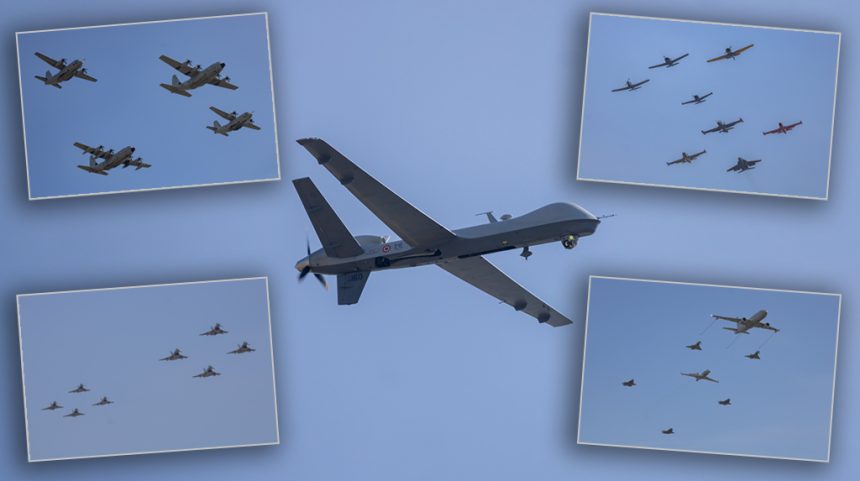One by one, all the formations that took part in the massive flying parade which featured all the assets currently in service, including an MQ-9A Predator B RPA.
As we already reported, on June 16, 17 and 18, the Italian Air Force celebrated its 100th anniversary with a memorable airshow which paid homage to the service’s history. After describing all the historic aircraft that flew during the airshow, it is now time to dissect the massive air parade that included all the different aircraft types currently in service.
It is not the first time the Italian Air Force shows its assets in flying air parades as, for an instance, it was already done this year on the official day of the 100th anniversary and for the Republic Day. This time, however, the parade was much larger, with a total of 63 aircraft involved, and also saw some assets taking part for the first time in this kind of activities [the Italian Air Force considers 101 the total number of aircraft that took part in the parade, from the ‘100’ formation, to the Frecce Tricolori, included].
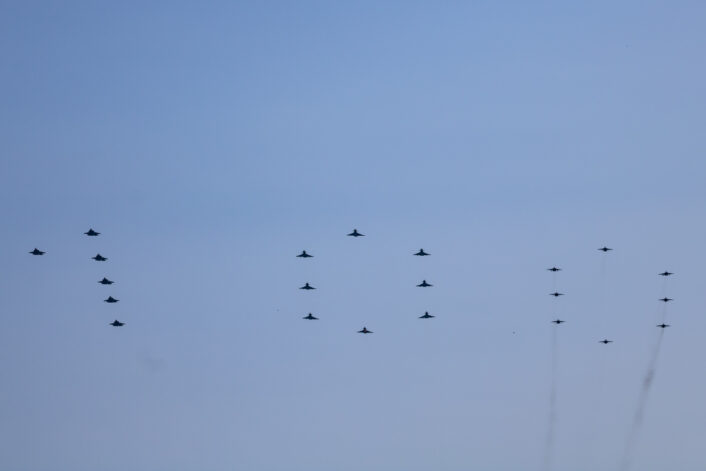
The symbol of the 100th anniversary, the 100 formation made its first appearance on March 28, the day of the anniversary. With six F-35s making the number one and eight F-2000s and eight T-346s making each of the zeros, the celebratory formation made its return for the airshow, flying in the afternoon on each day and headed towards the crowd.
Visualizza questo post su Instagram
Few moments later, the parade appeared on the horizon along the runway. The parade was opened by “Purple 1”, an MQ-9A Predator B (the name Reaper was not adopted in Italy) Remotely Piloted Aircraft that rocked the wings to salute the airshow attendees as flew over the airport. The first to induct UAV in service in Europe, the ItAF has been using extensively the Predator family of drones in multiple roles for 20 years.
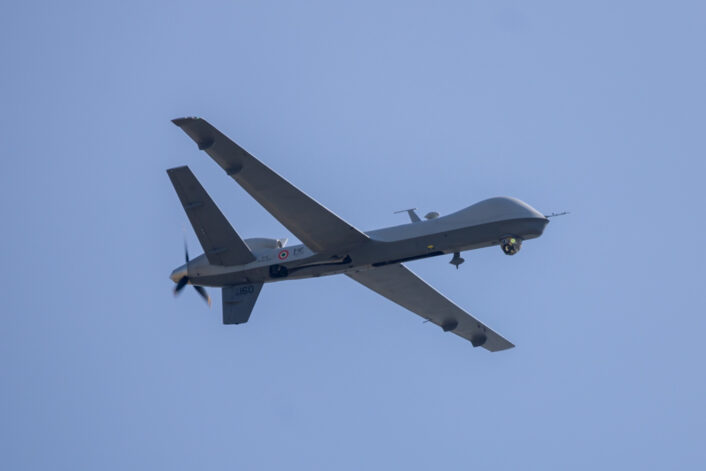
The parade continued with “Blue 1”, a rotary wing formation of three HH-139 Search and Rescue helicopters, a VH-139 VIP helicopter and two HH-212 helicopters. The HH-139s are assigned to the 15th Wing and dislocated in multiple bases across the country, always in alert 24/7 for SAR and EMS flights. The VH-139, assigned to the 31st Wing, is usually tasked with VIP transport, but is occasionally tasked for SAR and EMS operation, while the HH-212, assigned to the 9th Wing, are now primarily assigned special operations support tasks but still retain SAR capabilities.
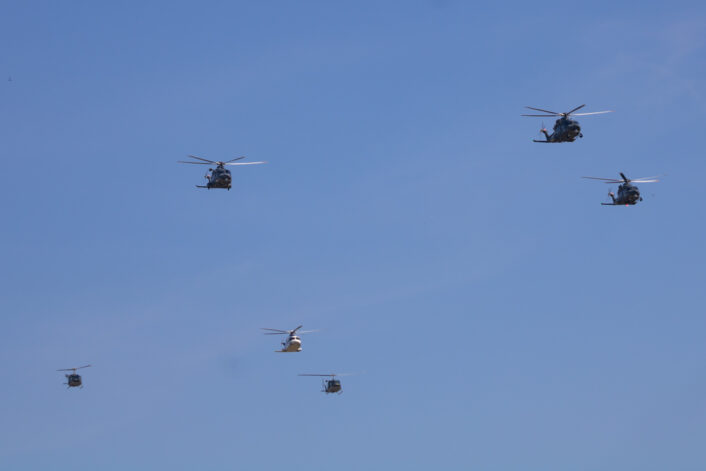
Then it’s the turn of “Blue 2”, a three-ship formation of TH-500 training helicopters. The helicopters, assigned to the 72nd Wing, are used to train new helicopter pilots and, as a secondary role, as liaison helicopters. The ItAF also employ the TH-500 in water operations, with a variant fitted with floats instead of the standard skids.
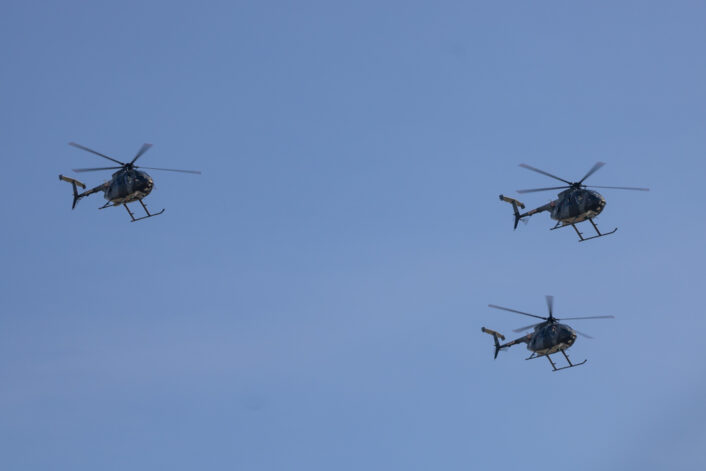
“Blue 3” followed the TH-500s with six HH-101 Caesar CSAR helicopters, assigned to the 9th Wing and used for special operations support missions and personnel recovery missions. The HH-101 is also capable of air-to-air refueling, one of the few helicopters with this capability in Europe. The lead helicopter is painted with a grey livery, instead of the black one of the other helicopters. In fact, the darker color was replaced with a lighter one in order to prevent cabin and cockpit overheating especially during daylight missions in the summer season.
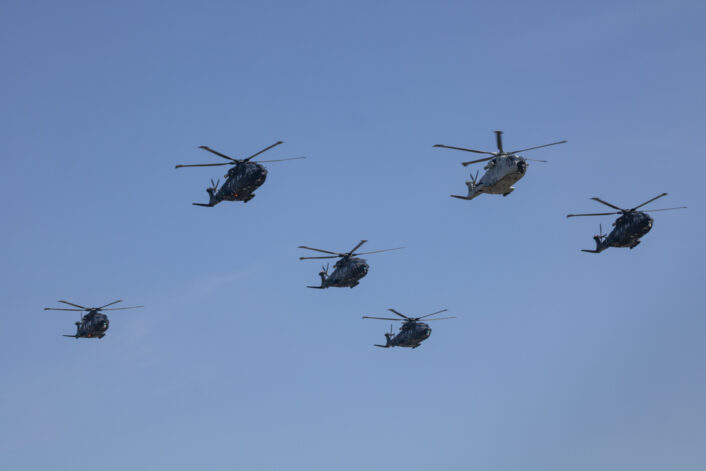
After the helicopters, “Red 1” opens the parade of the fixed wing aircraft with four U-208 utility aircraft and four T-260 trainers in two diamond formations. The U-208s are assigned to the 60th Wing, which uses them for liaison roles, glider towing, aeronautic culture courses and as “aggressor” during Slow Mover Intercept training missions.
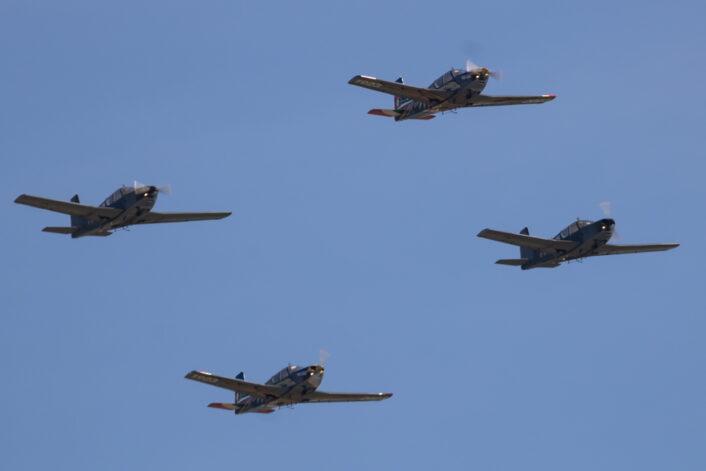
The T-260s are assigned to the 70th Wing, which employs them for the training of the Air Force Academy students and the final selection of the ones that will become pilots. The highly maneuverable aircraft accompanies student pilots not only during the Phase 1 training, which gives cadets their pilot licenses, but also during the following years of the Academy, until they graduate and move to Phase 2.

Four Piaggio P-180 (VC-180 in the MoD designation) of the 14th Wing were flying as “Red 2”. The Italian-made aircraft, which enjoyed a discreet success on the corporate market, is used for liaison roles and to train pilots of multi-engine/multi-crew aircraft for the Phase 3 training at the Centro Addestramento Equipaggi (Aircrew Training Center) Multi-Crew. The ItAF also operates a radio-measures variant dedicated to the periodic controls of navigational aids.
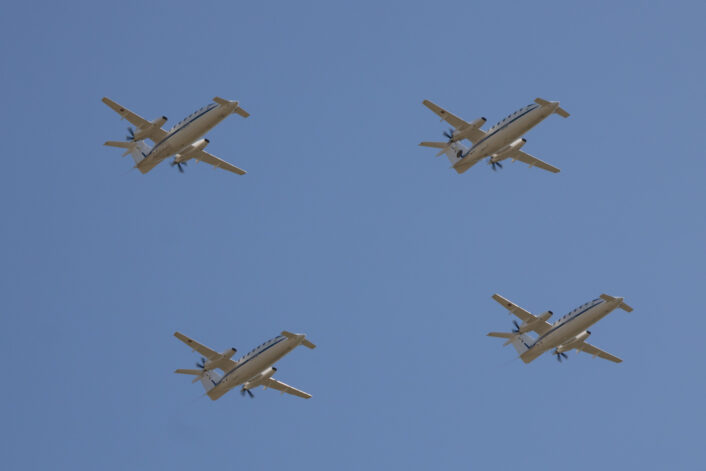
The 46th Air Brigade then showed up with the “Red 3” formation, made of a C-130J, a KC-130J and two C-27J cargo aircraft. The aircraft are the workhorses of the Aeronautica Militare for cargo transportation, airborne troops drop, humanitarian aid, but also EMS flights when there is the need to transport an ambulance or biocontainment equipment.
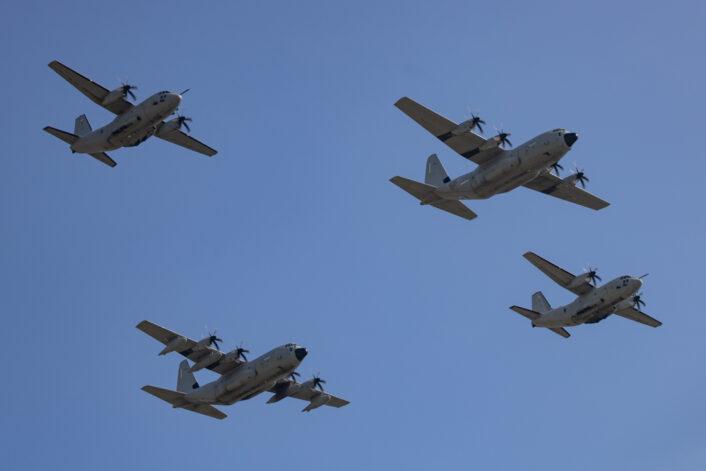
Changing color, it was then time for “White 1”, a formation made of a Beech King Air 350ER SPYDR and a P-72 maritime patrol aircraft. The SPYDR is used for SIGINT/COMINT (Signal/Communication Intelligence) and ISR (Intelligence, Surveillance, Reconnaissance), and will be replaced in future by the newer JAMMS aircraft. The P-72, jointly operated by Air Force and Navy, can undertake a variety of roles ranging from maritime patrol for the search and identification of surface vessels, SAR (search and rescue) missions, the prevention of narcotics trafficking, piracy, smuggling, territorial water security and monitoring and intervention in the event of environmental catastrophes.
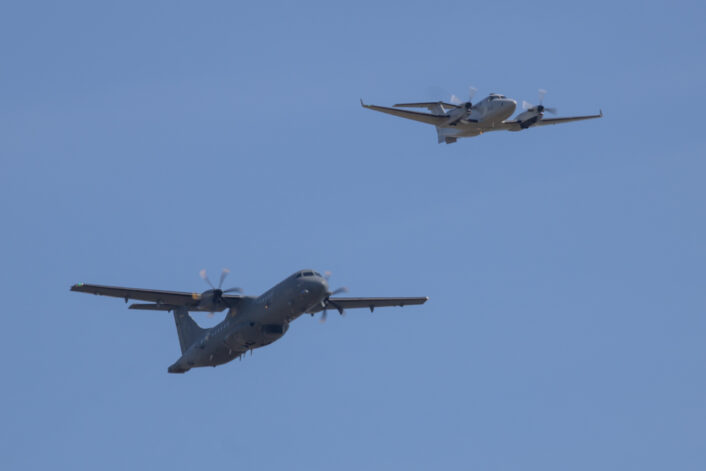
The Italian Air Force One, VC-119CJ, made its appearance as part of the “White 2” formation together with a VC-50 and a VC-900, operated by the 31st Wing. Although their primary role is VIP transport, these aircraft are often used for humanitarian and EMS flights both in Italy and abroad.
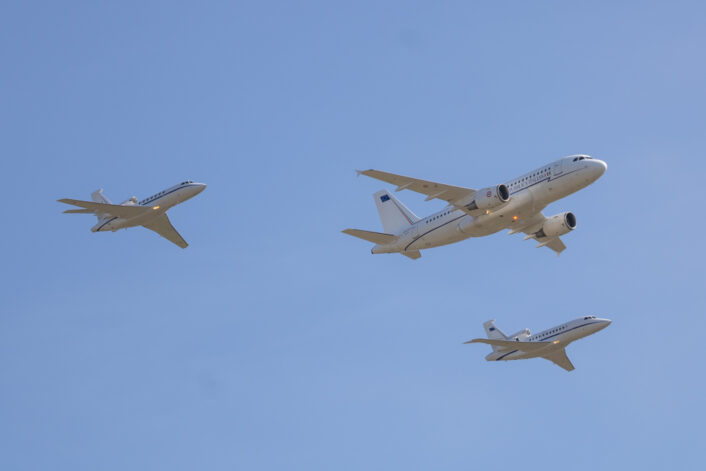
“White 3” featured four FT-339C of the 61st Wing, used for the Phase 3 training of pilots that will be assigned to fighter aircraft and RPAs. In the past the aircraft was also assigned a role in the Italian air defense as Slow Mover Interceptor, armed with 30 mm gun pods and AIM-9L missiles. Compared to the classic T-339A, the C variant features a modern glass cockpit, as well as air-to-air refueling capabilities.
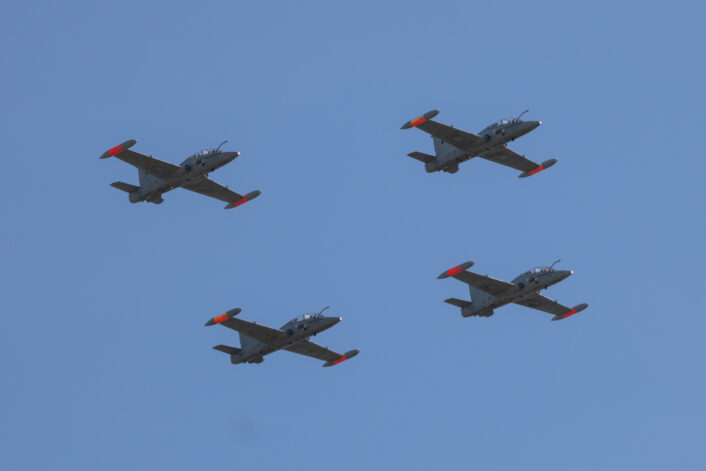
With the “Green 1” formation, the parade moved to the front-line aircraft. The formation featured two Tornado A-200C and two Tornado EA-200B of the 6th Wing, followed by three AMX A-11B of the 51st Wing. The aircraft are the dedicated assets of the Italian Air Force for ground attack and tactical reconnaissance missions, with multiple deployments abroad as part of international missions. The Tornado celebrated last year its 40th anniversary, while the AMX is nearing its retirement.
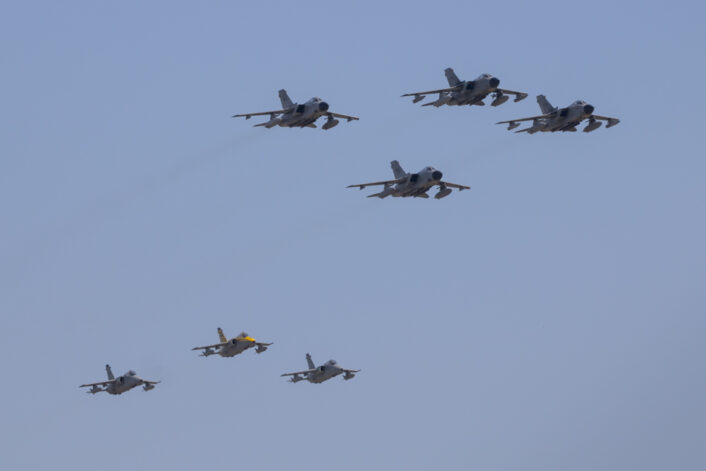
The “Green 2” formation features the backbone of the Aeronautica Militare, the Eurofighter F-2000 Typhoon. The European aircraft, in service with the 4th, 36th, 37th and 51st Wings, was initially used only for air-to-air missions, but later evolved in a true multirole aircraft with the addition of air-to-ground and tactical reconnaissance missions. The Typhoon is continuously deployed abroad to take part in NATO Air Policing missions and in the Inherent Resolve coalition.
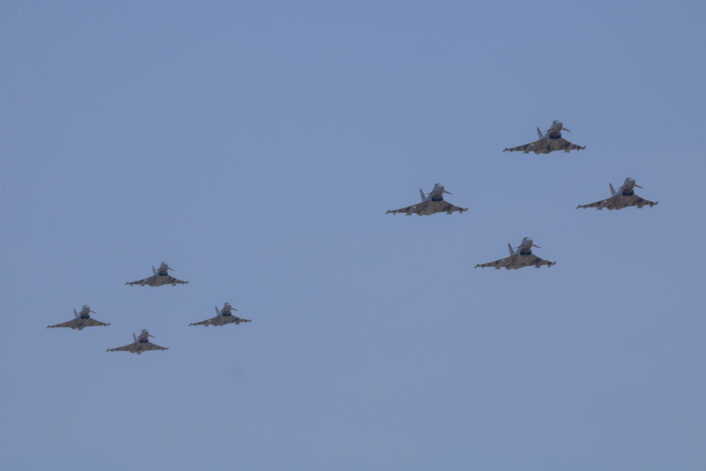
The final formation, “Green 3”, encloses all elements of the modern airpower. A KC-767 tanker of the 14th Wing, with its refueling hoses extended, leads the formation, while two Typhoons stand ready in the pre-contact positions behind the air-to-air refueling baskets. An E-550 Conformal Airborne Early Warning aircraft follows, escorted by two F-35As and one F-35B, which then broke the formation to perform a few flybys over Pratica di Mare, with the F-35B showing off its STOVL capabilities hovering in front of the crowd and then performing a short landing.
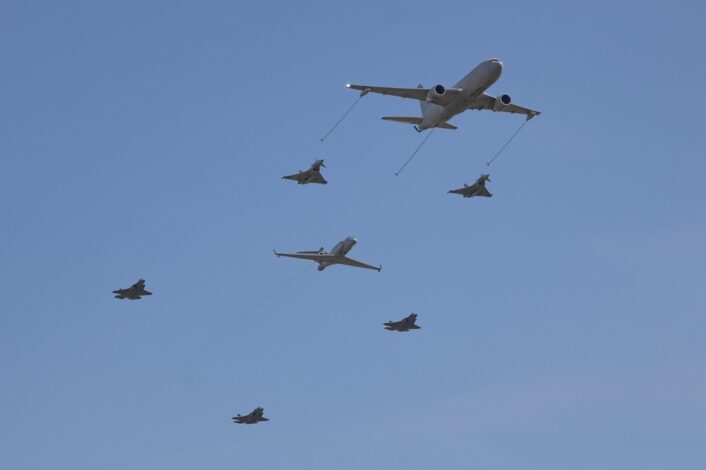
Visualizza questo post su Instagram
Ahead of the air parade, another well-known formation took the skies above Pratica di Mare: the Legend Formation. First appeared in 2015, the formation is made of the most famous trainer aircraft in the history of the Aeronautica Militare, including the U-208M, Fiat G-46, T-6G Texan (piloted by Gen. Alberto Rosso, former Chief of Staff of the ItAF), T-260, FT-339C, MB-326E, MB-326K and the most modern Italian trainer, the T-346A Master.
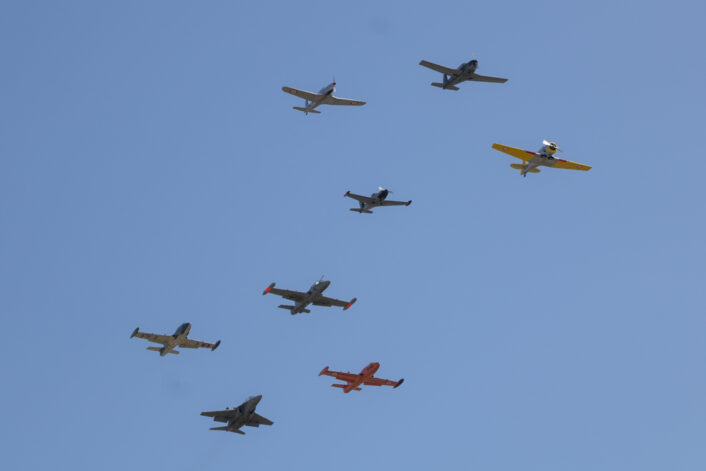
One thing that perhaps has gone almost unnoticed is that the callsigns of the sections, apart from purple and blue, are directly inspired by and pay homage to those of the cruises of the 1930s, in particular the one of the decennial. The only difference is that the English terminology has been used in honor of what is now the standard language in the aviation world.

